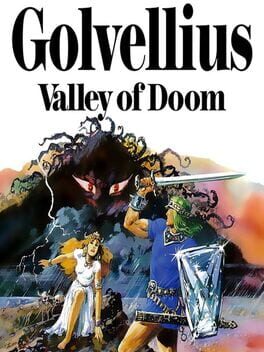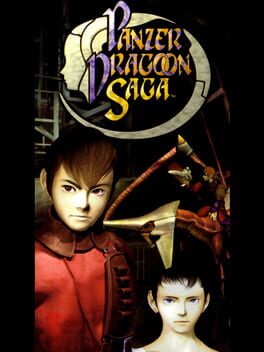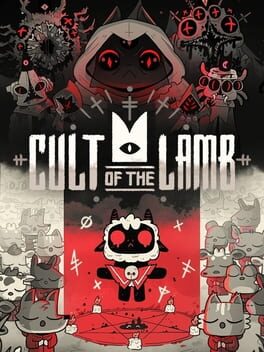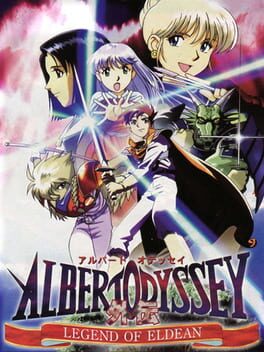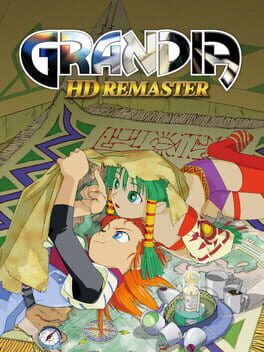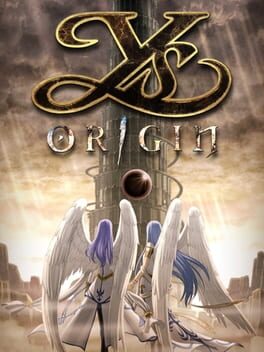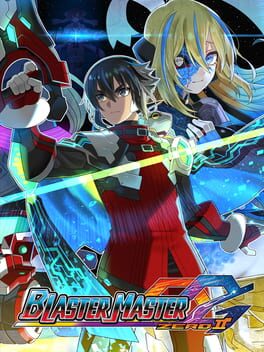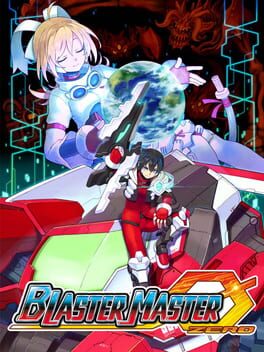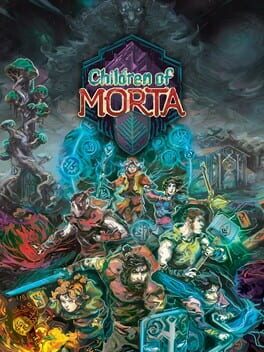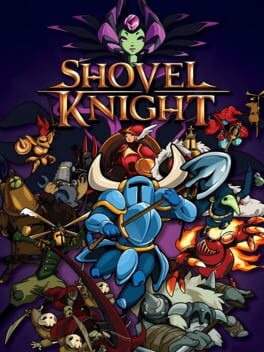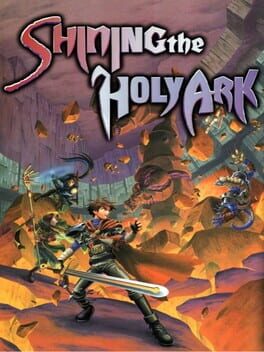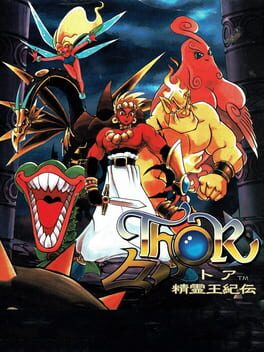GhaleonEB
BACKER
Golvellius is a fascinating game from a period when genre conventions had not yet been firmly established and developers were still throwing all kinds of ideas at the wall to see what stuck. Taking clear cues from The Legend of Zelda, Golvellius takes several of the same ideas and goes in a completely different direction with most of them.
The quest is simple, even if accomplishing it is not: find seven magical orbs in seven different regions of the titular valley. Each orb is kept in secret by an old lady in a cave - there are lots and lots of old ladies in caves in this game - and you have to explore a large overworld in a top-down view, slay monsters with your sword, find and collect gear, and defeat the boss of each area before she'll give up.
If that sounds like a familiar structure, the actual gameplay loop in each zone is not. In nearly every screen of Golvellius, there is a hidden entrance, and every screen is a small puzzle of sorts as you must figure out how to reveal it. Some come from killing enemies, some from striking certain trees, rocks or other objects, and a few have other requirements. Most of these caves have helpful characters offering advice, items or healing. A lot of them have old ladies, and they want money. So much money.
You start out with tight limit on how much gold you can carry, and the first order of business in each zone is finding old women in caves who will sell you bibles to raise your gold carrying capacity. Yes, actual bibles. No, I have no idea why. The second order of business is to find still more old ladies in caves and buy life meter-extending potions to withstand the steadily increasing onslaught of strong monsters. Still other old women in other caves sell herbs that act as potions when your health meter runs out, or other items. Even when it comes time to fork over the magical orb, they want money. Lots of money. This is basically a game of exploring and getting extorted by old women.
The caves are where Golvellius further differentiates itself from Zelda. While that game featured mazes to explore, Golvellius features gauntlets to survive, in two flavors. One is top-down and auto-scrolling, where the challenge is not getting scraped to the bottom of the screen and kicked out. The other is a very fast, simplified side-scrolling action platformer with lots of enemies, platforms and mini bosses. After either type of cave, there's a boss fight, and they are all well designed.
One of my favorite details is how the overworld music changes: not when you enter a new region, nor when bosses are defeated. Instead, it's when you find a powerful new piece of gear. Finding a great new sword and emerging to find it was so powerful it changed the overworld theme felt great.
The gameplay has one major flaw, in that you can only attack up down, left and right, but the monsters are designed to attack from all angles. This makes many areas a gauntlet of difficult to hit enemies and some areas are pretty tough for it. The caves are not especially hard - the most difficult to took me four attempts, and and they are all only a few minutes long - but they are very simple and repetitive affairs.
Despite these issues, I had a great time with this. Tons of secrets to discover, a challenging and reasonably long quest, a superbly well designed overworld and a terrific soundtrack. The game structure and gameplay loops are quite unique and I found myself really wishing more games in the action-RPG genre had this kind of experimentation. So long as the extortive old women hanging out in caves stay here, in the valley.
The quest is simple, even if accomplishing it is not: find seven magical orbs in seven different regions of the titular valley. Each orb is kept in secret by an old lady in a cave - there are lots and lots of old ladies in caves in this game - and you have to explore a large overworld in a top-down view, slay monsters with your sword, find and collect gear, and defeat the boss of each area before she'll give up.
If that sounds like a familiar structure, the actual gameplay loop in each zone is not. In nearly every screen of Golvellius, there is a hidden entrance, and every screen is a small puzzle of sorts as you must figure out how to reveal it. Some come from killing enemies, some from striking certain trees, rocks or other objects, and a few have other requirements. Most of these caves have helpful characters offering advice, items or healing. A lot of them have old ladies, and they want money. So much money.
You start out with tight limit on how much gold you can carry, and the first order of business in each zone is finding old women in caves who will sell you bibles to raise your gold carrying capacity. Yes, actual bibles. No, I have no idea why. The second order of business is to find still more old ladies in caves and buy life meter-extending potions to withstand the steadily increasing onslaught of strong monsters. Still other old women in other caves sell herbs that act as potions when your health meter runs out, or other items. Even when it comes time to fork over the magical orb, they want money. Lots of money. This is basically a game of exploring and getting extorted by old women.
The caves are where Golvellius further differentiates itself from Zelda. While that game featured mazes to explore, Golvellius features gauntlets to survive, in two flavors. One is top-down and auto-scrolling, where the challenge is not getting scraped to the bottom of the screen and kicked out. The other is a very fast, simplified side-scrolling action platformer with lots of enemies, platforms and mini bosses. After either type of cave, there's a boss fight, and they are all well designed.
One of my favorite details is how the overworld music changes: not when you enter a new region, nor when bosses are defeated. Instead, it's when you find a powerful new piece of gear. Finding a great new sword and emerging to find it was so powerful it changed the overworld theme felt great.
The gameplay has one major flaw, in that you can only attack up down, left and right, but the monsters are designed to attack from all angles. This makes many areas a gauntlet of difficult to hit enemies and some areas are pretty tough for it. The caves are not especially hard - the most difficult to took me four attempts, and and they are all only a few minutes long - but they are very simple and repetitive affairs.
Despite these issues, I had a great time with this. Tons of secrets to discover, a challenging and reasonably long quest, a superbly well designed overworld and a terrific soundtrack. The game structure and gameplay loops are quite unique and I found myself really wishing more games in the action-RPG genre had this kind of experimentation. So long as the extortive old women hanging out in caves stay here, in the valley.
1998
Turning a 3D shooter series into an RPG may seem odd if you are unfamiliar with the prior two Panzer Dragoon games. On paper, they are relatively brief rail shooters. Which is true, but for the breathtaking imagination on display, and the richness of the world building each game packs from end to end. In each game we glimpse a small part of a larger world, filled with history, mysteries, political factions, struggle, danger and wonder.
Turning to an RPG to explore some of that world makes perfect sense - Team Andromeda had build too large of a world to be contained in shooters alone. Revisiting Panzer Dragoon Saga for the first time in 15+ years, I'm struck once again by how audacious it is on all fronts. At every turn, this game defies convention and goes its own way, and all if it works. The world is almost relentlessly bleak, with humanity scraping for survival on the ground and fighting over access to ancient secrets in the sky. The art and music combine to create a mood and set a tone that his wholly unique, making the world where humanity is knocked so far down the food chain that hunters are constantly in fear of being hunted themselves feel vividly real.
The combat system has - somehow - never been imitated, despite it's brilliant adaptation of Panzer Dragoon's core gameplay, a system that looks and feels like a shooter but has the bones of turn-based positional battle.
The story seldom takes a predictable turn, yet there's never a twist for the sake of it; this is a character-driven story through and through. The events in and around the gorgeous, ethereal water ruins of Uru form a key sequence where enemies become tense allies, motivations clarify and alliances blur - and the story flows entirely from the clash of personalities and ideas, not contrivances.
I love the world this series, and this game, create. I love the feeling of flying our dragon through valleys, fields, tunnels and the epic Tower. I love the aching, mournful tone that feels rooted in real struggle. The undulating, cohesive soundtrack where every track is perfectly evocative of it setting. And how in an era when developers were discovering boob physics, Team Andromeda had an absolute refusal to sexualize Azel or deploy a male gaze upon her, creating one of gaming's most compelling characters along the way.
The one knock on Saga is the difficulty - simply put, the game is easy. But it's also relentlessly compelling and engaging. Being hard was never the goal: Panzer Dragoon is all about immersing us in a unique, beautiful, evocative and strange world, and it succeeds on every level. A timeless masterpiece.
Turning to an RPG to explore some of that world makes perfect sense - Team Andromeda had build too large of a world to be contained in shooters alone. Revisiting Panzer Dragoon Saga for the first time in 15+ years, I'm struck once again by how audacious it is on all fronts. At every turn, this game defies convention and goes its own way, and all if it works. The world is almost relentlessly bleak, with humanity scraping for survival on the ground and fighting over access to ancient secrets in the sky. The art and music combine to create a mood and set a tone that his wholly unique, making the world where humanity is knocked so far down the food chain that hunters are constantly in fear of being hunted themselves feel vividly real.
The combat system has - somehow - never been imitated, despite it's brilliant adaptation of Panzer Dragoon's core gameplay, a system that looks and feels like a shooter but has the bones of turn-based positional battle.
The story seldom takes a predictable turn, yet there's never a twist for the sake of it; this is a character-driven story through and through. The events in and around the gorgeous, ethereal water ruins of Uru form a key sequence where enemies become tense allies, motivations clarify and alliances blur - and the story flows entirely from the clash of personalities and ideas, not contrivances.
I love the world this series, and this game, create. I love the feeling of flying our dragon through valleys, fields, tunnels and the epic Tower. I love the aching, mournful tone that feels rooted in real struggle. The undulating, cohesive soundtrack where every track is perfectly evocative of it setting. And how in an era when developers were discovering boob physics, Team Andromeda had an absolute refusal to sexualize Azel or deploy a male gaze upon her, creating one of gaming's most compelling characters along the way.
The one knock on Saga is the difficulty - simply put, the game is easy. But it's also relentlessly compelling and engaging. Being hard was never the goal: Panzer Dragoon is all about immersing us in a unique, beautiful, evocative and strange world, and it succeeds on every level. A timeless masterpiece.
2022
A reasonably good entry in the roguelite genre. Or what I call, do randomized dungeons, then do something relaxing, then repeat, genre. Cult of the lamb has a great juxtaposition between the cute and creepy, leaning into a mix of cult and cosmic horror, with adorable characters.
Where it falls down, at least on the Switch version, is performance. Frame rate drops and hard crashes were numerous in my game. But worse was the repetitive boss design, cramped building space and catastrophically bad final boss, where the combat design really fell apart. I'm still shocked at the geometry traps, poor perspective and poor enemy design in finale.
Some fun humor in here and it plays decently, but there was a lot that just didn't click with me.
Where it falls down, at least on the Switch version, is performance. Frame rate drops and hard crashes were numerous in my game. But worse was the repetitive boss design, cramped building space and catastrophically bad final boss, where the combat design really fell apart. I'm still shocked at the geometry traps, poor perspective and poor enemy design in finale.
Some fun humor in here and it plays decently, but there was a lot that just didn't click with me.
I enjoy a lot of what Albert Odyssey offers and revisit it every now and then when I want a classic JRPG. The artwork is really stunning throughout, with a high level of detail and great use of color. The quest is well written and structured, and I love that the mythological descendent of Albert is, well, not who we expect. The combat is very plain turn-based action but it gets the job done.
In the absence of other issues, I'd call this a better than average RPG from the era. But the encounter rate is too high for such simple battles, and they can grow tedious, especially since the load times going into and out of battle, despite Working Designs reducing them from the Japanese version, are still too long. There's a horrible bug that causes combat to fail to load now and then, forcing replayed sections. The last dungeon is the largest difficulty spike I've ever seen in an RPG. And boy, Working Designs "humor" is on full display here, and in particularly misogynistic form. I'm still grateful to them that I got to play this back when it came out, and for the love they put into their packaging and releases. But their humor was jarring at the time and wildly out of place now.
All that said, I still enjoy this one for the world, the story, and the music. It's a beautifully crafted game, with some rough edges and bog-standard combat.
In the absence of other issues, I'd call this a better than average RPG from the era. But the encounter rate is too high for such simple battles, and they can grow tedious, especially since the load times going into and out of battle, despite Working Designs reducing them from the Japanese version, are still too long. There's a horrible bug that causes combat to fail to load now and then, forcing replayed sections. The last dungeon is the largest difficulty spike I've ever seen in an RPG. And boy, Working Designs "humor" is on full display here, and in particularly misogynistic form. I'm still grateful to them that I got to play this back when it came out, and for the love they put into their packaging and releases. But their humor was jarring at the time and wildly out of place now.
All that said, I still enjoy this one for the world, the story, and the music. It's a beautifully crafted game, with some rough edges and bog-standard combat.
2019
Always wanted to play this, and while the remaster itself has its issues, the underlying game is incredible. It is biologically impossible not to fall in love with Grandia's characters. I was already finding the character design, their interactions and their story compelling, and then Sue and Puffy did their cheer attack, and that was that. Love.
While the overall story is a familiar one - an organization of baddies is digging into ancient ruins and awakening powers they don't fully understand and certainly cannot control - the details greatly differentiate it from similar stories I've played before. The light steampunk setting, the way the story unfolds over a massive amount of terrain, the cross seas adventuring, the naked medusas and guitar-wielding bad guys - great ideas are packed into every corner.
The remaster itself is a bit sloppy. I'd greatly have preferred the original pixel art over this very smudgy "smoothing" of the artwork. And the game is far too easy, only really rising up to a challenge on optional dungeons or a few major bosses. But the wildly engaging and smart battle system keeps even the easy fights fun.
All in all I loved this game, the world, the characters, the quest the systems. I just wish the remaster did it more justice.
While the overall story is a familiar one - an organization of baddies is digging into ancient ruins and awakening powers they don't fully understand and certainly cannot control - the details greatly differentiate it from similar stories I've played before. The light steampunk setting, the way the story unfolds over a massive amount of terrain, the cross seas adventuring, the naked medusas and guitar-wielding bad guys - great ideas are packed into every corner.
The remaster itself is a bit sloppy. I'd greatly have preferred the original pixel art over this very smudgy "smoothing" of the artwork. And the game is far too easy, only really rising up to a challenge on optional dungeons or a few major bosses. But the wildly engaging and smart battle system keeps even the easy fights fun.
All in all I loved this game, the world, the characters, the quest the systems. I just wish the remaster did it more justice.
2006
A terrific top-down action-RPG. The game is structured around climbing levels of a tower, which has its pros and cons. There's a great feeling of progress as we ascend toward our goal, with each level distinct and offering unique challenges. But it also renders the game quite linear, with most branching paths short, so there's less opportunity for exploration than there could be.
Solid controls, a seriously excellent soundtrack accent and a great story with memorable characters. Definitely recommend playing through the game with every character. While it can get repetitive at times, the story and parts of the game change dramatically for each and it was a lot of fun seeing the pieces come together.
I found fighting some of the bosses a bit clunky and there was some frustrating collision detection at times, but otherwise this was a ton of fun. Beat the game on every character.
Solid controls, a seriously excellent soundtrack accent and a great story with memorable characters. Definitely recommend playing through the game with every character. While it can get repetitive at times, the story and parts of the game change dramatically for each and it was a lot of fun seeing the pieces come together.
I found fighting some of the bosses a bit clunky and there was some frustrating collision detection at times, but otherwise this was a ton of fun. Beat the game on every character.
What you'd expect from a sequel: more of what made the first good, with refined systems, more expansive levels, a wider variety of stages, and greater use of the overworld map and the way the various pieces fit together.
They basically tried to do more with every part of the game: the action in the vehicle is more dynamic and varied, the top down sections have way more challenge and variety, and the on foot sections are more elaborate. I think they were all successful, though the on foot sections got rather frustrating. I also ran into a soft lock by saving while on foot in a place it turns out you can't get out of, so watch out.
Sill need to play #3, but if it's as good as this one, it should be a lot of fun.
They basically tried to do more with every part of the game: the action in the vehicle is more dynamic and varied, the top down sections have way more challenge and variety, and the on foot sections are more elaborate. I think they were all successful, though the on foot sections got rather frustrating. I also ran into a soft lock by saving while on foot in a place it turns out you can't get out of, so watch out.
Sill need to play #3, but if it's as good as this one, it should be a lot of fun.
2017
I'd never played any of the original Blaster Master games, but I had friends who had them and so was familiar from seeing them as a kid. I enjoyed this a lot - a fairly straight forward side scrolling action game mixed with top down action scenes with light exploration. On balance the side scrolling action is stronger, but the top-down scenes provide variety and are fun in their own right.
The story is passable, the pixel art strong and the music enjoyable. Feels like there is a lot of room to develop these ideas further, which the sequel confirms.
The story is passable, the pixel art strong and the music enjoyable. Feels like there is a lot of room to develop these ideas further, which the sequel confirms.
2017
Every now and then a game comes along that announces itself as special from the moment you start up. More rare are games so impactful that the genre can be cleanly divided into before, and after. Such is Hollow Knight: There's metroidvanias before it came out, and after it's earth-shaking impact.
At the surface of Hollow Knight is the sprawling, beautifully constructed and interconnected world design, the evocative and often rousing music, the hand-drawn art and animation, the perfect gameplay. The tremendous freedom with which we can explore the world. There are vividly realized characters, sharply characterized with through art, voice and dialogue that bring them to life. It's truly incredible the way Myla and Hornet - to pick but two examples - become fully-realized characters we care deeply about despite their relatively short screen time.
Another level down, the initially typical story of a fallen kingdom being explored is steeped in an original and compelling story. Through rich worldbuilding we learn of ancient enemies, tragedy, heroism, tribal pacts. We encounter characters simultaneously silly and affecting (somehow), like a dung beetle whose joyful demeaner and optimism mask a tragic past.
Amidst a heavy story Hollow Knight is also utterly hilarious, including the payoff to a joke developed so carefully that the punchline lands as unexpectedly as it is perfect. It's one of the funniest things I've ever seen in a game (let's just say the object of someone's obsession takes on a very odd fantasy). And yet somehow the humor melds with the world rather than clashing with it, a balancing act that is really tough to pull off.
Yet another level down, we find the deeper secrets of the story, the nooks and crannies of the world, the deep lore - and the themes of what it's really about. Hollow Knight has come to mean a great deal to me. It's a special game, yes. It plays beautifully, sure. But it's also a game with an insight into human - and bug - nature. Ultimately, all things must accept an end, whether we want to or not. It's how we respond to that end that defines us.
At the surface of Hollow Knight is the sprawling, beautifully constructed and interconnected world design, the evocative and often rousing music, the hand-drawn art and animation, the perfect gameplay. The tremendous freedom with which we can explore the world. There are vividly realized characters, sharply characterized with through art, voice and dialogue that bring them to life. It's truly incredible the way Myla and Hornet - to pick but two examples - become fully-realized characters we care deeply about despite their relatively short screen time.
Another level down, the initially typical story of a fallen kingdom being explored is steeped in an original and compelling story. Through rich worldbuilding we learn of ancient enemies, tragedy, heroism, tribal pacts. We encounter characters simultaneously silly and affecting (somehow), like a dung beetle whose joyful demeaner and optimism mask a tragic past.
Amidst a heavy story Hollow Knight is also utterly hilarious, including the payoff to a joke developed so carefully that the punchline lands as unexpectedly as it is perfect. It's one of the funniest things I've ever seen in a game (let's just say the object of someone's obsession takes on a very odd fantasy). And yet somehow the humor melds with the world rather than clashing with it, a balancing act that is really tough to pull off.
Yet another level down, we find the deeper secrets of the story, the nooks and crannies of the world, the deep lore - and the themes of what it's really about. Hollow Knight has come to mean a great deal to me. It's a special game, yes. It plays beautifully, sure. But it's also a game with an insight into human - and bug - nature. Ultimately, all things must accept an end, whether we want to or not. It's how we respond to that end that defines us.
2019
Children of Morta beautifully intertwines the play, die, upgrade, play loop of a rougue-lite with some terrific storytelling in between. I found all the characters in the family and their dynamic compelling and I was as eager to have another run at a location as I was to see how the story progressed.
I prefer ranged characters - given the choice, I'm always the archer - so I was glad to see some ranged options with the family. But I really disliked the system that forced you to pivot away from your chosen character due to the infection system. Forcing me to play another character I did not enjoy as much got very frustrating. Eventually I would just start a few runs and quit them to get back to my main. Not a good system.
Otherwise, the game could have used some better bosses - the final one in particular - as well as some more variety. But otherwise, I found this game compelling and addictive and enjoyed my time with it.
I prefer ranged characters - given the choice, I'm always the archer - so I was glad to see some ranged options with the family. But I really disliked the system that forced you to pivot away from your chosen character due to the infection system. Forcing me to play another character I did not enjoy as much got very frustrating. Eventually I would just start a few runs and quit them to get back to my main. Not a good system.
Otherwise, the game could have used some better bosses - the final one in particular - as well as some more variety. But otherwise, I found this game compelling and addictive and enjoyed my time with it.
2014
I wanted to like this more than I did, having heard about it for so long. I think in the end it's a case of the game being well made, but it just wasn't really for me. I enjoyed the sprite work and world design, how the game flows and progresses, the abundance of secrets. The character designs are all great and memorable. But I didn't enjoy the gameplay as much as I hoped, and I found the old-school approach to difficultly - which can often veer into feeling quite cheap - was off-putting. Still, I'm glad I played it, as this was a fun romp overall. And I get so many references now!
I played this as part of the Treasure Trove collection, though it's the only part of that collection I finished.
I played this as part of the Treasure Trove collection, though it's the only part of that collection I finished.
1996
Shining in the Darkness is one of my favorite RPGs - love me a good dungeon crawl - and this is a remarkable direct sequel. It provides enough context to be a stand-alone game, while both serving as a direct sequel to Shining in the Darkness, and as a prequel to Shining Force III. It's an remarkable balancing act but they pull it off.
Entirely first person, we can now explore towns, castles and other interiors in addition to the dungeons and caves. Greatly expanded in scope, there are now numerous caves, shrines and other dungeons to explore, a contrast from the monolithic labyrinth of Darkness. Similar to the Shining Force games, the environments are packed with secrets that encourage and reward exploration, and with so much more area to explore, there's a lot more to find. Notable is the unusual but brilliant fairy system that serves as our preemptive combat strike, rewarding bonus XP and gold.
The dungeons are all very unique and superbly designed. Every one has new ideas packed into them, from finding new passageways and boats in the waterways, to having to weave navigating on the ceiling and floor in another. And the music is simply incredible throughout. A couple of personal favorites:
https://www.youtube.com/watch?v=bEfows0mD6A
https://www.youtube.com/watch?v=uwY1csmv4gs
The quest is long, tough, varied and packed with great characters and ideas. I love that while there are more party members than you can have active at once, even those that did not participate in battle will level up with you, so no one falls behind. You never get locked into a core set and can adjust the party on the fly as needed - which is frequently needed due to the very challenging boss fights.
I love everything about this game. The lone major flaw in the performance: combat in particular suffers from frequent slow down. With some additional optimization, the game would run so much better. Still, this is one heck of a great dungeon crawl and worth playing any way you can if that's your jam.
Entirely first person, we can now explore towns, castles and other interiors in addition to the dungeons and caves. Greatly expanded in scope, there are now numerous caves, shrines and other dungeons to explore, a contrast from the monolithic labyrinth of Darkness. Similar to the Shining Force games, the environments are packed with secrets that encourage and reward exploration, and with so much more area to explore, there's a lot more to find. Notable is the unusual but brilliant fairy system that serves as our preemptive combat strike, rewarding bonus XP and gold.
The dungeons are all very unique and superbly designed. Every one has new ideas packed into them, from finding new passageways and boats in the waterways, to having to weave navigating on the ceiling and floor in another. And the music is simply incredible throughout. A couple of personal favorites:
https://www.youtube.com/watch?v=bEfows0mD6A
https://www.youtube.com/watch?v=uwY1csmv4gs
The quest is long, tough, varied and packed with great characters and ideas. I love that while there are more party members than you can have active at once, even those that did not participate in battle will level up with you, so no one falls behind. You never get locked into a core set and can adjust the party on the fly as needed - which is frequently needed due to the very challenging boss fights.
I love everything about this game. The lone major flaw in the performance: combat in particular suffers from frequent slow down. With some additional optimization, the game would run so much better. Still, this is one heck of a great dungeon crawl and worth playing any way you can if that's your jam.
I was aware of Zelda II's reputation for being an odd duck going into this, but even that did not prepare me. This is a weird game. The leveling system is really strange. How combat is initiated in the overworld is kinda goofy. There's nothing really wrong with the side scrolling action, other than it being punishingly difficult. So it's really different from the first game, which is admirable since the spirit of the first one is still kinda in there.
What really knocks this down is how punishing it all is. Dying brings you back to the shrine at the start of the game, initiating a trek through the ENTIRE overworld to get back. And boy did I die a lot. It's brutal and got so tiring. Mele combat is clunky. Come to mention it, all the actions are rather clunky. It's just not all that fun to actually play.
I commend the game for trying many new things, and I'm aware aspects of it were kind of groundbreaking at the time. But the parts here do not gel into a whole, and there are some just plain bad ideas in the mix (the aforementioned leveling and backtracking, chief among them). This is one of those, glad I experienced it, but will never revisit kind of games. Going by how Nintendo pivoted the series from here, they seemed to feel the same.
Played on NES Classic.
What really knocks this down is how punishing it all is. Dying brings you back to the shrine at the start of the game, initiating a trek through the ENTIRE overworld to get back. And boy did I die a lot. It's brutal and got so tiring. Mele combat is clunky. Come to mention it, all the actions are rather clunky. It's just not all that fun to actually play.
I commend the game for trying many new things, and I'm aware aspects of it were kind of groundbreaking at the time. But the parts here do not gel into a whole, and there are some just plain bad ideas in the mix (the aforementioned leveling and backtracking, chief among them). This is one of those, glad I experienced it, but will never revisit kind of games. Going by how Nintendo pivoted the series from here, they seemed to feel the same.
Played on NES Classic.
1986
This was my second Zelda game, after the Link's Awakening remake on Switch, but in a way I've been playing it for years, so massive it this game's influence. The bow, the bombs, the pieces of heart, the dungeons - I've played countless games massively influenced or straight up playing homage to OG Zelda. It was nice to finally play the one that started it all.
It's clear to see what massive leap for adventure / action-RPGs this was. At the time, it was packed with new ideas and a huge scale, and retains the intuitive gameplay, steep challenge, ludicrous numbers of secrets and supremely well designed overworld and dungeons. OG Zelda is STILL better designed than many of the knock-offs I've played.
Still, frustrations abound in some cheap enemies, opaque puzzles, respawning enemies and controls that are never quire as quick as i'd like them to be. Mostly things I suspect are greatly refined in later entries, going by my experience with Link's Awakening. I had a lot of fun learning the references and roots of this genre I've loved for so long.
Played the first quest to completion on NES Classic.
It's clear to see what massive leap for adventure / action-RPGs this was. At the time, it was packed with new ideas and a huge scale, and retains the intuitive gameplay, steep challenge, ludicrous numbers of secrets and supremely well designed overworld and dungeons. OG Zelda is STILL better designed than many of the knock-offs I've played.
Still, frustrations abound in some cheap enemies, opaque puzzles, respawning enemies and controls that are never quire as quick as i'd like them to be. Mostly things I suspect are greatly refined in later entries, going by my experience with Link's Awakening. I had a lot of fun learning the references and roots of this genre I've loved for so long.
Played the first quest to completion on NES Classic.
1996
Legend of Oasis is an interesting sequel. It was apparently turned around very quickly after Beyond Oasis on the Genesis, which explains the game's major shortcoming: the overworld is very, very small. It's essentially just a hub to branch off to the various shrines, which are the main areas of play.
Tiny overworld aside, I love this game. It takes all the ideas that worked so well in Beyond Oasis and expands on them. The combat and weapon systems are refined and improved, with a better and deeper combo system (and permanent weapons, thank goodness). The spirits have even more uses, and with six of them the way we use them to progress in the shrines is even more complex. The hand drawn art is gorgeous, with fluid animation and vivid use of colors. Boss battles are highlights. There's a TON of secrets and large secret areas to find. And there's a lot of off-kilter humor throughout, such as the pitifully moaning zombies.
If the overworld had been fully developed and the controls refined just a touch more - less clunky than Beyond Oasis, but still not perfect - this would be a masterpiece. Still, it's one of my favorite Saturn games, and a really unique take on the top-down action--RPG. There's nothing else that's quite like this unfortunately truncated series.
Tiny overworld aside, I love this game. It takes all the ideas that worked so well in Beyond Oasis and expands on them. The combat and weapon systems are refined and improved, with a better and deeper combo system (and permanent weapons, thank goodness). The spirits have even more uses, and with six of them the way we use them to progress in the shrines is even more complex. The hand drawn art is gorgeous, with fluid animation and vivid use of colors. Boss battles are highlights. There's a TON of secrets and large secret areas to find. And there's a lot of off-kilter humor throughout, such as the pitifully moaning zombies.
If the overworld had been fully developed and the controls refined just a touch more - less clunky than Beyond Oasis, but still not perfect - this would be a masterpiece. Still, it's one of my favorite Saturn games, and a really unique take on the top-down action--RPG. There's nothing else that's quite like this unfortunately truncated series.
